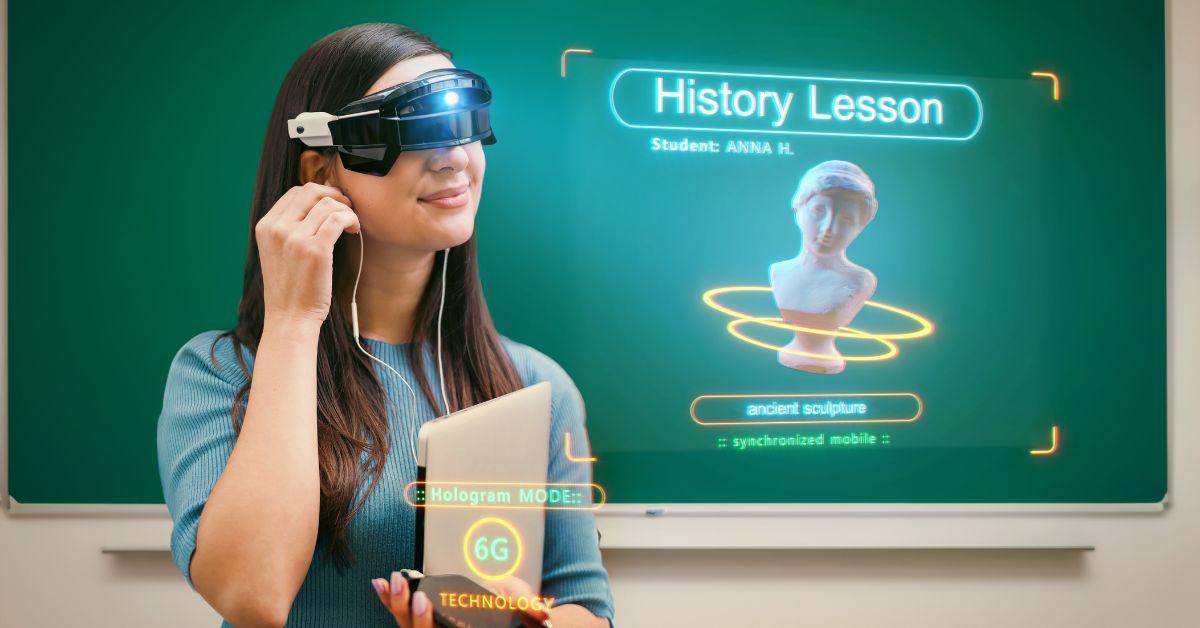Unlocking Success: Effective Strategies for Training Teachers to Use VR/AR Tools
Virtual Reality (VR) and Augmented Reality (AR) are transforming classrooms worldwide, making learning more engaging, interactive, and immersive. However, the successful integration of these cutting-edge technologies heavily relies on one crucial factor—well-trained teachers.In this in-depth guide, we’ll unlock proven strategies for training teachers to use VR/AR tools effectively. Whether you’re a school leader,professional development coach,or an educator eager to embrace technology,this article is packed with practical tips,benefits,and real-life case studies to ensure your VR/AR implementation journey leads to success.
Why Train Teachers in VR/AR Tools?
As the demand for immersive learning rises, VR/AR tools are no longer a futuristic concept—they’re an essential aspect of modern education. but these technologies come with a learning curve. Without proper VR/AR training, even the most enthusiastic teachers may struggle to integrate them into their lessons. Comprehensive training empowers teachers to:
- Confidently use VR/AR hardware and software in class
- Create captivating,interactive lesson plans
- Foster student engagement and improve learning outcomes
- Troubleshoot common technical issues efficiently
By investing in effective professional development for teachers,schools can maximize the benefits of VR/AR in education.
Key Benefits of VR/AR Training for Educators
- Enhanced Technological Confidence: Structured VR/AR training helps educators overcome apprehensions and adapt to technological advancements faster.
- Improved Instructional Design: Teachers learn to design lessons that leverage VR/AR for deeper understanding and retention.
- Active Learning: With hands-on AR/VR tools, students can actively participate, increasing motivation and comprehension.
- reduced Technology Barriers: Quality training addresses digital literacy gaps, making immersive technology accessible to all teachers nonetheless of background.
- Collaboration and Creativity: Educators can collaborate, share resources, and inspire one another to craft innovative VR/AR experiences.
Effective Strategies for Training Teachers on VR/AR Tools
Unlocking success in VR/AR adoption begins with strategic, thoughtful professional development. Here are proven strategies to ensure teachers thrive with immersive technologies:
1. start with Hands-On Learning
- Use demo sessions with popular VR/AR platforms like Google Expeditions,ClassVR,or Merge Cube.
- Encourage peer-to-peer sharing of “aha!” moments and discoveries.
2. Scaffold Training with Real Classroom Scenarios
- Model VR/AR lesson delivery using actual curriculum content.
- Walk teachers thru common classroom scenarios, including managing devices, setting learning objectives, and assessing student progress.
- Address potential challenges, such as device rotation in large classes or age-appropriate content selection.
3. Integrate Continuous Professional Learning
- Offer ongoing workshops and refresher courses to keep teachers updated on the latest VR/AR tools and best practices.
- Enable access to bite-sized, on-demand training videos and web resources for just-in-time learning.
4.Foster a Community of Practice
- Create platforms (such as school-based forums or Slack channels) where teachers can share resources, lesson plans, and troubleshooting tips.
- Encourage mentorship, pairing tech-savvy educators with those just starting with VR/AR.
5. Provide Technical and Pedagogical Support
- Ensure helpdesk or IT support is available for immediate assistance with device setup or software issues.
- Offer workshops focusing not only on technology use but also on pedagogical integration: how can VR/AR enhance inquiry-based learning, collaboration, or differentiated instruction?
6. Celebrate and Share Success Stories
- Regularly highlight teachers who have successfully integrated VR/AR in their classroom, inspiring others to experiment and innovate.
Practical Tips for Successful VR/AR Teacher Training
- Set Clear goals: Begin your training with defined objectives tailored to school needs and available resources.
- Personalize Learning: Recognize varying comfort levels among teachers and offer differentiated learning paths.
- Incorporate Evaluation: Use surveys and classroom observations to assess the impact of training and refine it over time.
- Utilize Microlearning: Break training into small, manageable modules focusing on specific skills or tools.
Case Study: VR/AR Teacher Training in Action
In 2023, Willow creek launched a district-wide initiative to enhance STEM education with VR and AR. The professional development strategy included:
- Initial bootcamp sessions for experiential learning with VR headsets and AR apps
- Bi-monthly peer-led workshops sharing lesson plans and troubleshooting tips
- Mentoring by “edtech champions” who supported colleagues in designing and implementing immersive lessons
- Frequent feedback loops via surveys and collaborative reflection meetings
Impact: within the first year, over 85% of teachers reported increased confidence in using VR/AR, and student engagement in STEM lessons soared by 30% based on internal assessments.
First-Hand Experience: A teacher’s journey with VR/AR Training
“Training began with skepticism; I’d never used a VR headset before. But our facilitator guided us through hands-on activities, showing how VR could transport students to Ancient Rome or let them manipulate 3D molecules. We shared laughs and swapped ideas in small groups. Gradually, I started designing my own AR scavenger hunt for biology. Now,I can’t imagine teaching without these tools and love watching my students’ eyes light up with every VR adventure!”
– Emily Ramirez,Middle School Science Teacher
Recommended VR/AR Tools and Resources for Teachers
- Google Expeditions: Virtual reality field trips for all ages.
- CoSpaces Edu: Create interactive 3D experiences and AR projects.
- ClassVR: A dedicated VR platform for schools with a content library and teacher support.
- Merge Cube: Affordable AR cube that brings objects to life in 3D for hands-on exploration.
- Nearpod VR: Immersive lessons and assessments built into one easy-to-use platform.
Conclusion: Empower Your Teachers, Transform Your Classrooms
Unlocking the full potential of VR and AR tools in education hinges on effective teacher training. by providing hands-on experiences, continuous support, and fostering a collaborative community, schools can help teachers become confident, innovative users of immersive technologies. The result? Engaged students, enriched learning experiences, and a school culture that celebrates revelation and innovation.
Start today—equip your educators with the VR/AR training they need, and watch your classrooms transform!

